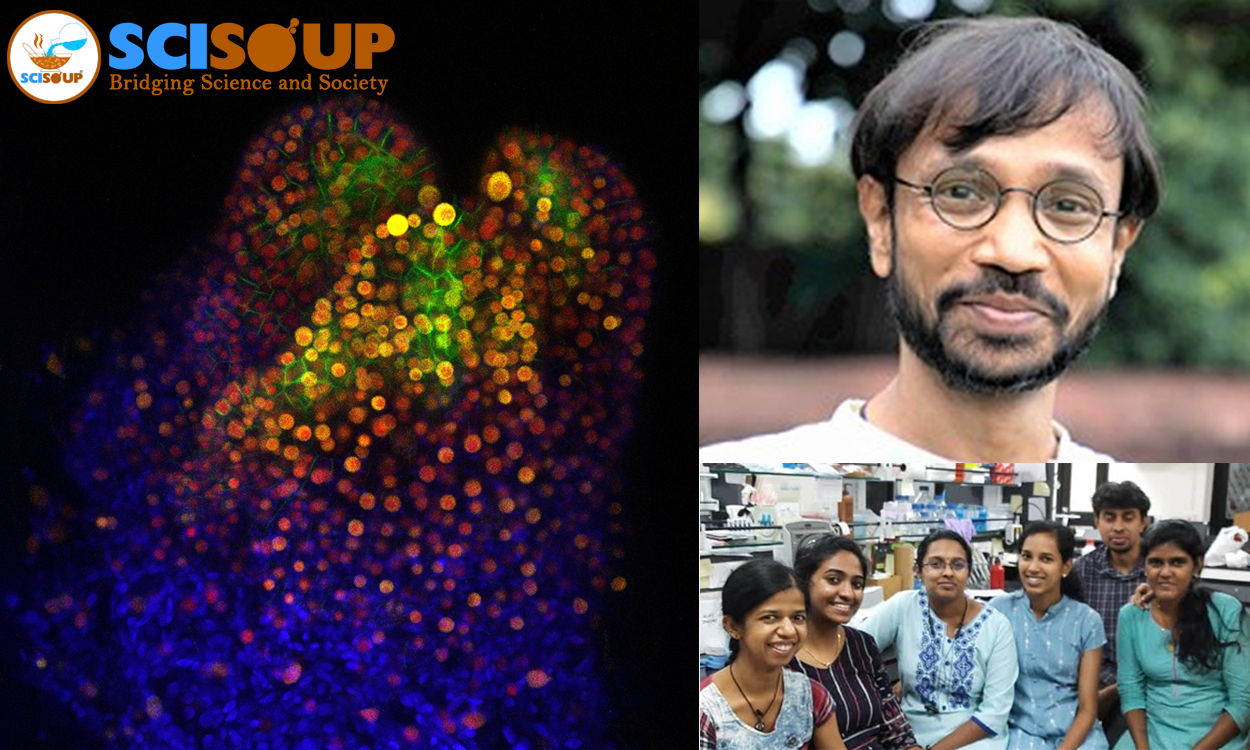
The fate of a regenerating organ is decided during its early stages, largely by the direction in which its cells are oriented to direct the flow of plant hormone. To learn more about what directs the orientation of these cells?, SciSoup spoke with study leader Kalika Prasad about the recent research findings published in the Cell Press journal ‘Developmental Cell’.
SEP 24, 2022 | BY RATNESHWAR THAKUR
In the SciSoup interview series “Unfolding Science With SciSoup”, the authors explain the key findings of this study, significance of their new results and its benefits for public or scientific community.
What inspired you for this study?
With the current advances in research and high throughput technologies, it is quite possible to imagine a futuristic society where synthetic eyes, heart, lungs or other desired organs can be made to curb the shortage of matching organs for transplantation and save countless lives. In fact, this was made possible in plant systems since 1950s, and it is only a matter of time until it is successful in animals. We were fascinated how a desired organ or an entire organism can be made from scratch in a dish.
To unfold the mystery, we took on regeneration in plant (Arabidopsis thaliana) as a model. Specific organs or an entire plant can be generated in large numbers just from a silver of root or stem or leaf. This is achieved by culturing the plant tissue in optimal hormonal conditions to form a mass of unorganized cells called callus, from which organs arise subsequently. However, only a few cells of the callus called progenitors, which can be deemed as the precursors of regenerating organ can make a complete organ system. How are these progenitors selected? What determines their fate? How do they know what to form and when to form? All these questions intrigued us.
What is the main finding from your research?
We find that it is not just the amount of stem cell regulators that instruct organ regeneration, but the physical forces. A shell of cells which encloses the precursor of regenerating organ, communicates to the precursor through physical forces on how it should orient their cells for proper organ regeneration.
How would you explain your research findings and its significance?
We found that the fate of a regenerating organ is decided during its early stages, largely by the direction in which its cells are oriented to direct the flow of plant hormone. What directs the orientation of these cells? A major advance in the study was when we found that the regenerating organ was encapsulated within a shell of cells expressing a cell wall loosening enzyme. The expression of this enzyme enables shell of cells with flexibility to stretch, and communicate mechanistically with the regenerating organ enclosed within it to orient their cells. As a proof of concept, we show that disrupting the cell’s flexibility by knocking down the gene for the cell wall loosening enzyme, or physically removing the cells of the shell brought about severe regeneration defects. This study is a significant mile stone in deciphering how a desired organ/ organism can be generated on demand, merely by altering the physical forces. The study a culmination of almost a decade’s work was published on 23rd August, 2022 in the journal Developmental cell.
How will this research be useful to the public or Scientific Community?
Our model provides access to the mechanism underlying organ regeneration. This accessibility will allow researchers to enhance regeneration potential in other plants or animals just by optimizing the physical forces without the need for relying on genetic engineering. It has a translational value in the future as it can be exploited to propagate medicinal or endangered plants, or plants of agronomic importance in large numbers, just from a silver of tissue without genetic modification.
Would you like to share any Eureka moment of this research?
It was when we found the expression pattern of the cell wall loosening enzyme. We found it to be expressed solely in a shell of cells encapsulating the progenitor, which underwent stretching. As opposed to the commonly thought notion that stretching cells often divide, these surrounding cells hardly divided. This intrigued us, and we set forth to unravel the mystery behind this strange behaviour. This was the turning point of our research where we discovered a model that establishes the role of physical forces in instructing the organ to regenerate properly.
Journal Reference:
Mechanical conflict caused by a cell-wall-loosening enzyme activates de novo shoot regeneration
Disclaimer:
SciSoup claims no competing interest.

Share your opinions and suggestions for future stories - to scisoup@gmail.com and engage with us on